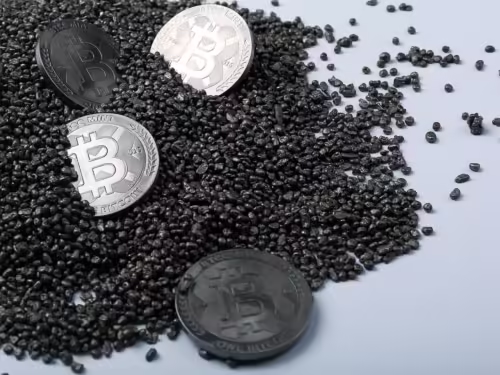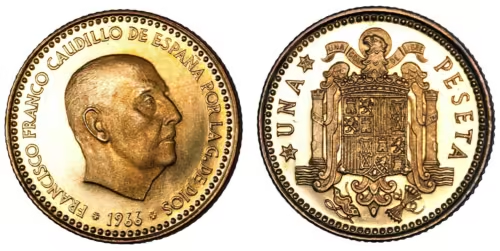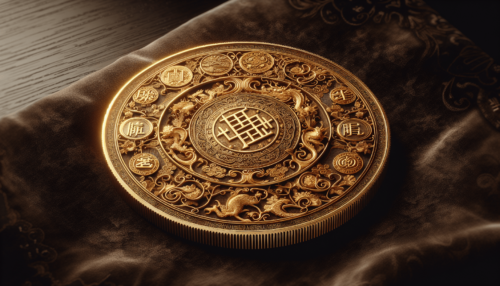Can you imagine the thrill of discovering a rare coin in your old collection? This sense of anticipation is shared by collectors, historians, and investors worldwide. Rare coins are more than just currency; they hold historical significance, tell fascinating stories, and can be incredibly valuable. This article will delve into the top 10 rarest coins in the world, shedding light on their unique histories, distinct features, and current market trends.
Table of Contents
Overview: The Significance of Rare Coins
Rare coins, often referred to as numismatic treasures, offer more than monetary value. They encapsulate moments in history, reflect cultural changes, and at times, reveal political shifts. Collecting these coins extends beyond investing; it is about preserving heritage and honoring the past.
A coin’s rarity is typically measured by its historical significance, minting quantity, and current availability. Some coins have become rare due to being pulled from circulation soon after release, while others owe their scarcity to limited minting.
Thesis Statement
This article will identify and explore the top 10 rarest coins in the world, providing a detailed examination of their backgrounds, features, and current valuations. Emphasizing historical context and present-day relevance, it presents a comprehensive guide for numismatists and history enthusiasts alike.

This image is property of pixabay.com.
Historical Context: The Genesis of Numismatic Rarity
Understanding the origins of these rare coins requires a grounding in historical context. Coins have been a cornerstone of trade and commerce for millennia. However, several factors contribute to a coin’s rarity, including:
- Historical Events: Coins minted during significant historical periods often become rare due to their age, political turmoil, or shifts in economic systems.
- Minting Errors: Coins featuring minting errors are often pulled from circulation, subsequently becoming rare collector’s items.
- Limited Minting: Some coins are produced in limited numbers, either as commemorative issues or due to the economic strategies of a period.
While these factors set the stage for rarity, each coin in our list has its unique story to tell.
Current Trends in Coin Collecting
Over recent years, the numismatic market has seen an increase in interest and investment. Events such as online auctions and global forums have made these coins more accessible. The demand for rare coins remains robust due to their historical value and investment potential, supported by an expanding base of collectors who span different age groups and demographics.
Key Concepts and Definitions
Understanding rare coins requires a familiarity with certain key concepts:
- Numismatics: The study or collection of currency, including coins, tokens, paper money, and related objects.
- Mintage: The process of producing coins, often denominating the total quantity produced in a given period.
- Obverse and Reverse: The front (obverse) and back (reverse) sides of a coin, both of which often carry significant designs or inscriptions.
- Grade: Assessed condition of a coin, ranging from poor (P-1) to perfect mint state (MS-70).
These terms will frequently appear throughout the analysis, helping to form a clearer understanding of each coin’s significance and condition.

This image is property of pixabay.com.
Breakdown of the Top 10 Rarest Coins
1. Flowing Hair Silver Dollar (1794/1795)
The Flowing Hair Silver Dollar, minted in the early years of the US Mint, is a cornerstone of American coin collecting.
Historical Context: Minted in 1794 and 1795, these coins were the first silver dollars struck by the United States. They feature a portrait of Liberty with flowing hair on the obverse and an eagle on the reverse.
Current Value: The estimated valuation of a high-grade Flowing Hair Silver Dollar can exceed $10 million. In 2013, a specimen sold for $10,016,875, underscoring its rarity and demand.
2. Double Eagle (1933)
The story of the 1933 Double Eagle is steeped in intrigue and legal drama.
Historical Context: Only a few of these $20 gold coins were minted before the US exited the gold standard. Nearly all were melted down, but a few escaped into private hands.
Current Value: In 2002, one of these coins sold for over $7.5 million at auction. The 1933 Double Eagle remains one of the most sought-after and contentious coins in numismatic history.
3. Brasher Doubloon (1787)
Ephraim Brasher, a goldsmith and neighbor to George Washington, struck the Brasher Doubloons.
Historical Context: These gold coins were privately minted in 1787, predating the establishment of the US Mint.
Current Value: A Brasher Doubloon fetched $7.4 million in a 2011 auction. Their legacy as America’s earliest gold coin contributes significantly to their rarity.
4. Edward III Florin (1343)
The Edward III Florin, known as the Double Leopard, is a medieval gold coin with only three known specimens.
Historical Context: Struck in 1343, these coins were designed for international trade but were quickly withdrawn due to a lack of general acceptance.
Current Value: One of these coins was sold for approximately $6.8 million, making it one of the most valuable medieval English coins.
5. Liberty Head Nickel (1913)
The 1913 Liberty Head Nickel is shrouded in mystery, with only five known examples.
Historical Context: Inexplicably minted without authorization, these nickels never officially entered circulation.
Current Value: A well-preserved specimen sold for $3.7 million in 2010, highlighting its enigmatic background and rarity.
6. 1870-S Three Dollar Gold Piece
This coin’s mystique lies in its virtually unknown existence.
Historical Context: Only one confirmed specimen has ever been discovered. It was likely minted for the cornerstone ceremony of the San Francisco Mint.
Current Value: Selling for over $6 million in private sales, this coin is a significant historical artifact.
7. Queen Elizabeth II Gold Maple Leaf (2007)
Making modern history, the Queen Elizabeth II Gold Maple Leaf is notable for its size and composition.
Historical Context: Minted by the Royal Canadian Mint in 2007, it is made of 99.999% pure gold and weighs 100 kilograms.
Current Value: Its melt value alone is millions of dollars, although its collector value surpasses this figure. One sold for $4 million in 2010.
8. Saint-Gaudens Double Eagle (1907)
The Saint-Gaudens Double Eagle is often acclaimed for its stunning design.
Historical Context: Commissioned by President Theodore Roosevelt, this coin represented a renaissance of American coinage.
Current Value: High-grade specimens can fetch up to $7.5 million, reflecting its artistic and historic significance.
9. 2007 Cnut the Great Silver Penny
This coin throws back to early medieval English history.
Historical Context: Minted under the reign of Cnut the Great, this coin is rare due to its age and the limited number of surviving specimens.
Current Value: One sold for $850,000 at auction, marking it as an invaluable piece of England’s numismatic history.
10. 1873 Indian Head Cent
An uncommon twist marks the rarity of this coin.
Historical Context: Produced in a transitional year, it features a doubled die obverse, a minting error that makes it especially rare.
Current Value: Specimens in good condition can achieve prices upwards of $100,000.
Comparative Analysis
A comparative analysis of these coins provides further insight into their significance and valuation:
| Coin | Year | Minting Quantity | Current Value | Unique Features |
|---|---|---|---|---|
| Flowing Hair Silver Dollar | 1794/95 | ~2,000 | Over $10 million | First US silver dollar |
| Double Eagle | 1933 | ~445,500 (almost all melted) | Over $7.5 million | Restricted release due to economic policies |
| Brasher Doubloon | 1787 | Few | Over $7.4 million | Privately minted gold coins |
| Edward III Florin | 1343 | Thousands (3 known) | Over $6.8 million | Medieval English gold coin |
| Liberty Head Nickel | 1913 | 5 | Over $3.7 million | Unauthorized minting |
| 1870-S Three Dollar Gold | 1870 | 1 | Over $6 million | Possibly for cornerstone ceremony |
| Gold Maple Leaf | 2007 | Few | Over $4 million | World’s largest gold coin |
| Saint-Gaudens Double Eagle | 1907 | 12 (Ultra High Relief) | Over $7.5 million | Stunning coin design |
| Cnut Silver Penny | 1020-1030 | Few (surviving) | Over $850,000 | Early medieval English coin |
| Indian Head Cent | 1873 | Few | Over $100,000 | Doubling die obverse |
This table illustrates not only the sheer monetary value of these coins but also their varying historical contexts and unique features that make each an irreplaceable treasure in numismatics.

This image is property of pixabay.com.
Impact Assessment
The rarity of these coins impacts various sectors, from historical research to financial investment.
- Cultural Heritage: These coins serve as tangible links to past eras, fostering a greater understanding of history.
- Economic Interest: The high value of rare coins makes them attractive to investors seeking to diversify their portfolios.
- Research and Education: Rare coins offer insights into historical minting technologies and economic conditions, proving invaluable for researchers.
Future Directions and Implications
Predictions
The future of rare coin collecting holds promising trends. The advent of digital technology and blockchain may offer authenticated traceability for rare coins. Online platforms can also democratize access to these coins, expanding the pool of potential collectors.
Implications
The sustained interest in rare coin collecting suggests a continued appreciation of tangible historical artifacts. As collectors become younger and more tech-savvy, we can expect new ways of engaging with numismatic treasures. The educational value and investment potential of these coins will continue to secure their relevance for future generations.
In light of the detailed historical backgrounds and current trends discussed, what do you think the future holds for the world of rare coins?

Conclusion
In summary, rare coins are more than just artifacts; they are portals into the past, carriers of untold stories, and steadfast investments. From the enchanting history of the 1794 Flowing Hair Silver Dollar to the modern grandeur of the 2007 Queen Elizabeth II Gold Maple Leaf, each coin on this list represents a unique narrative in the tapestry of global history.
The sustained interest and increasing value of these coins reaffirm their significance. As we’ve demonstrated through detailed examples and thorough analysis, rare coins will continue to captivate collectors and historians alike. Their rarity, historical relevance, and investment potential make them invaluable assets in the world of numismatics.
Do you have any rare coins or stamps that tell a unique story?

